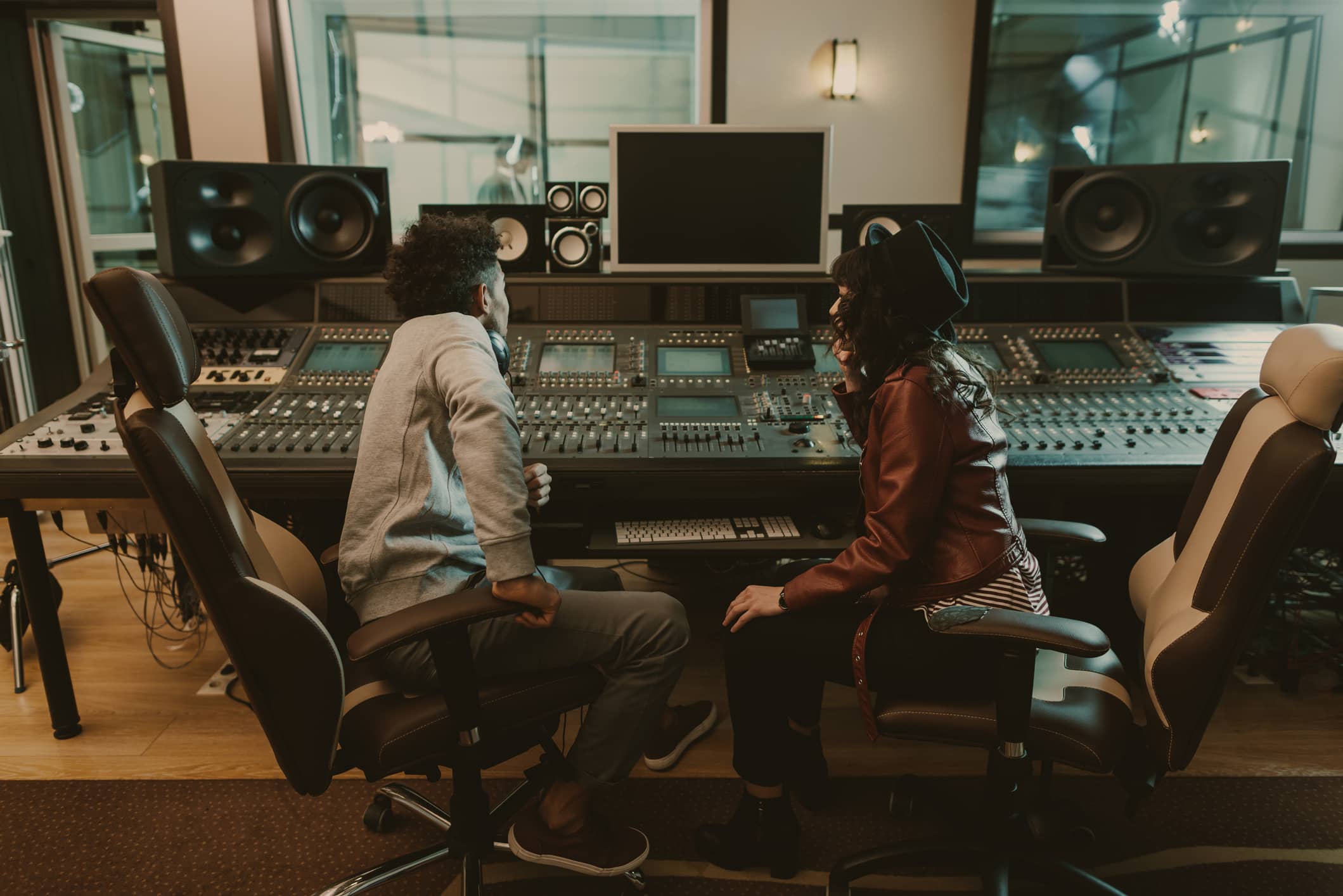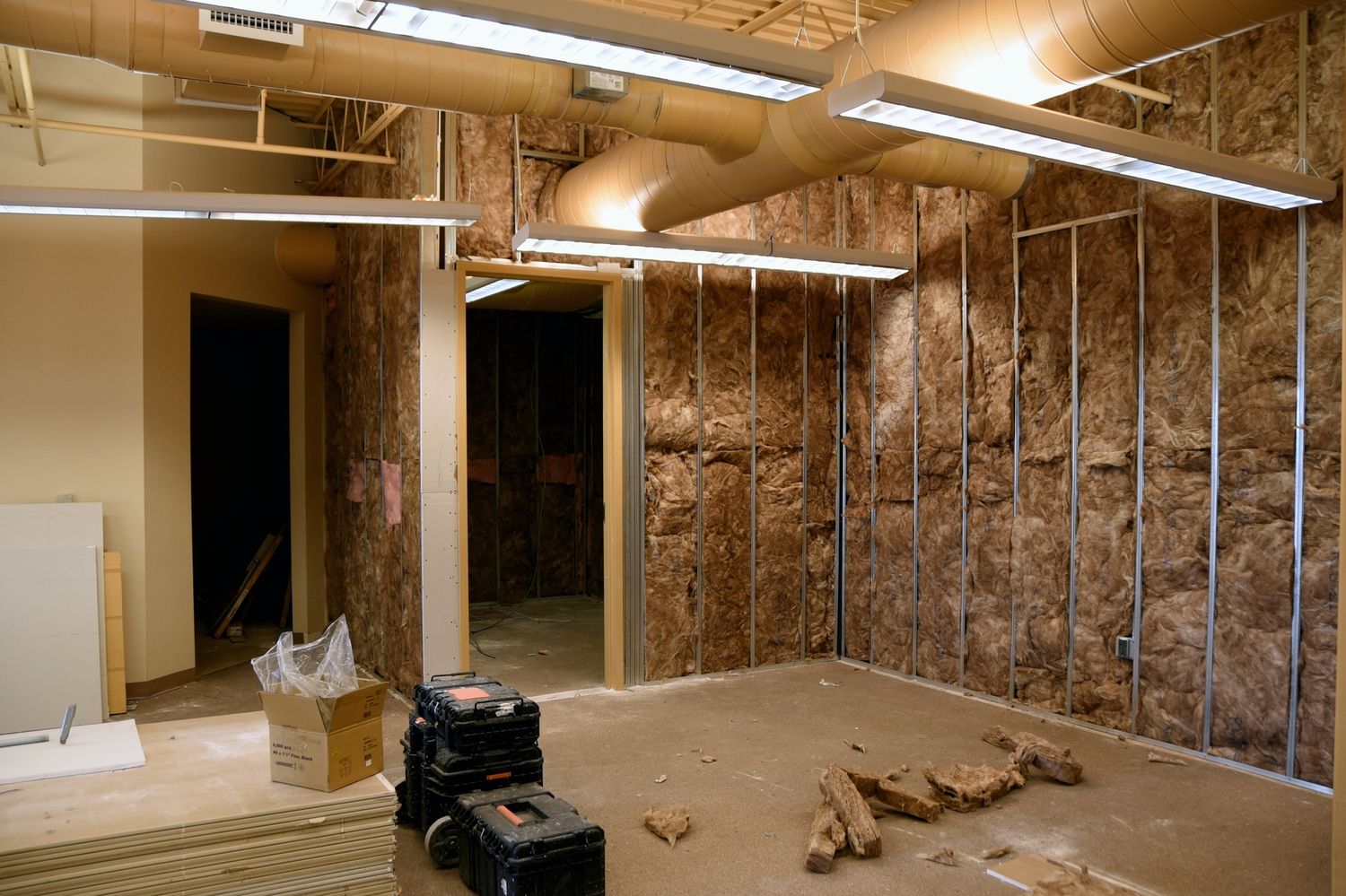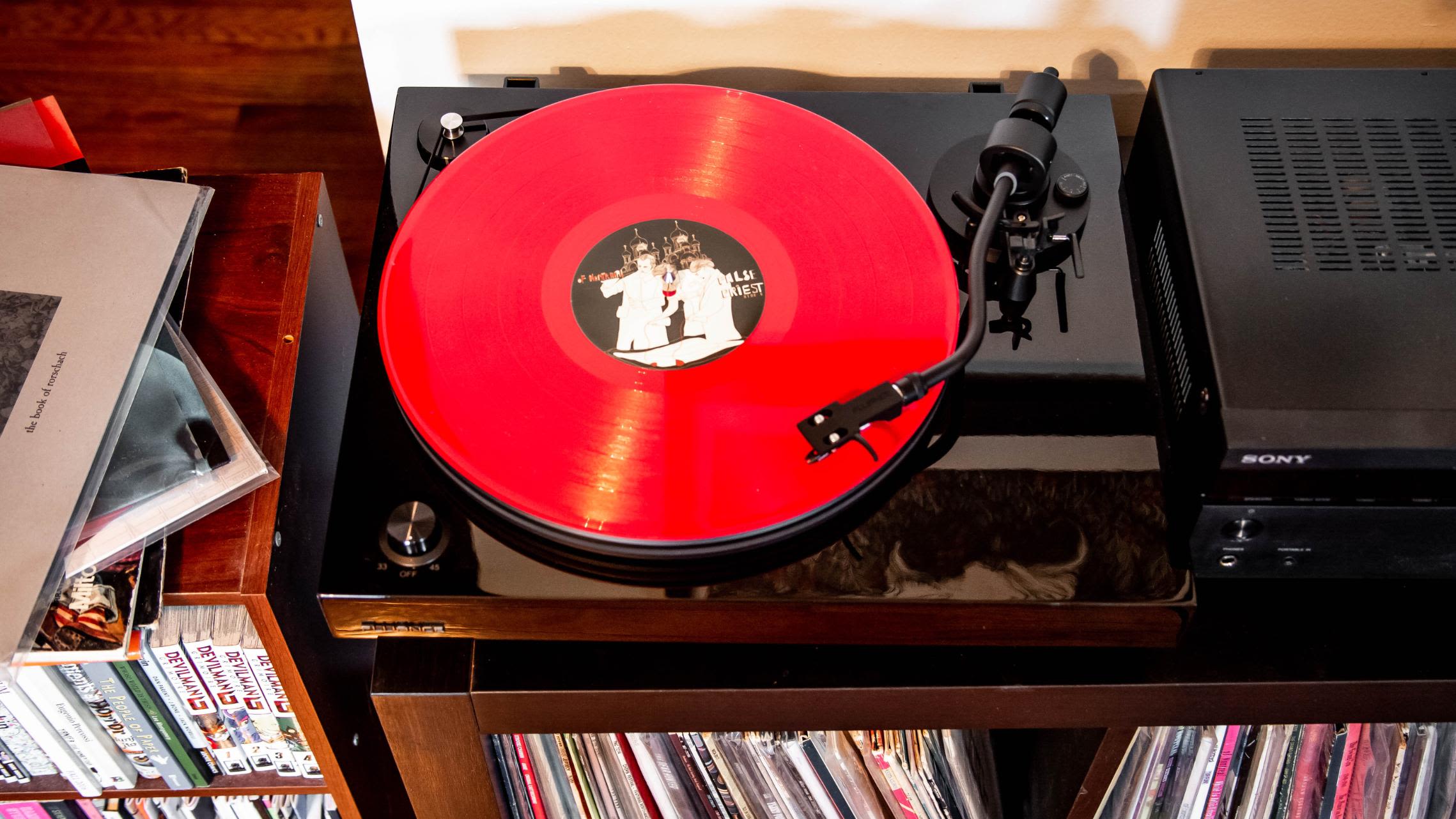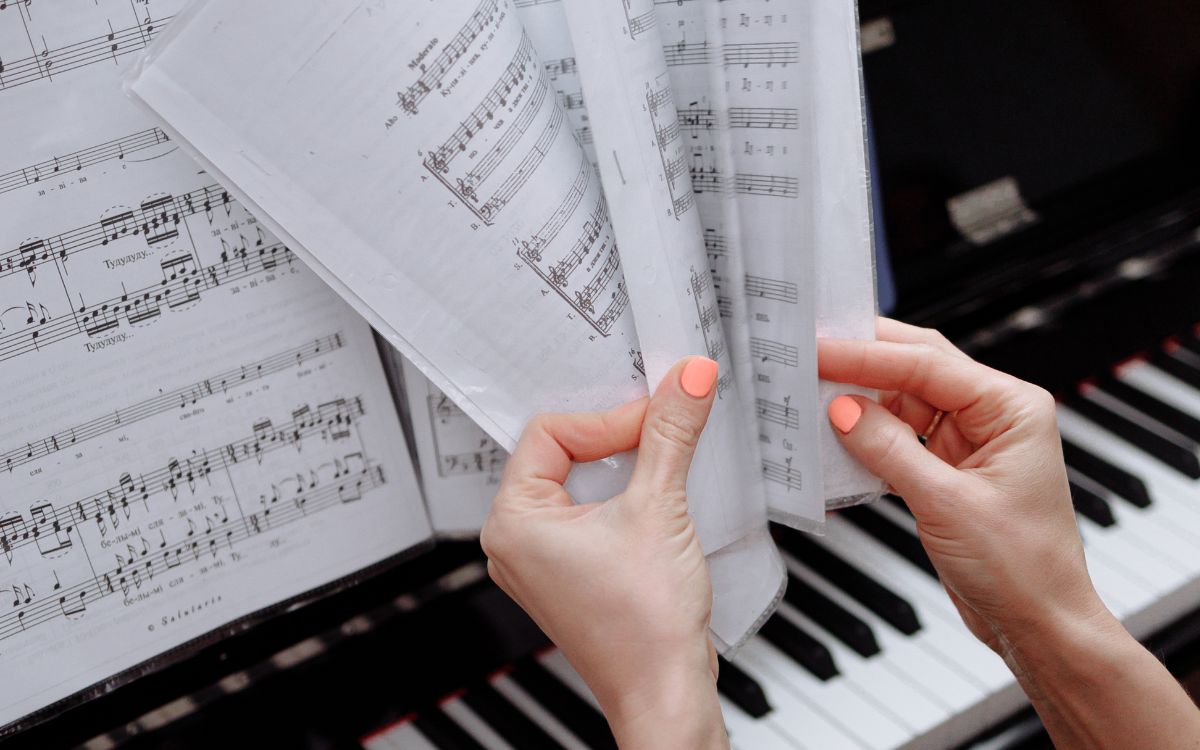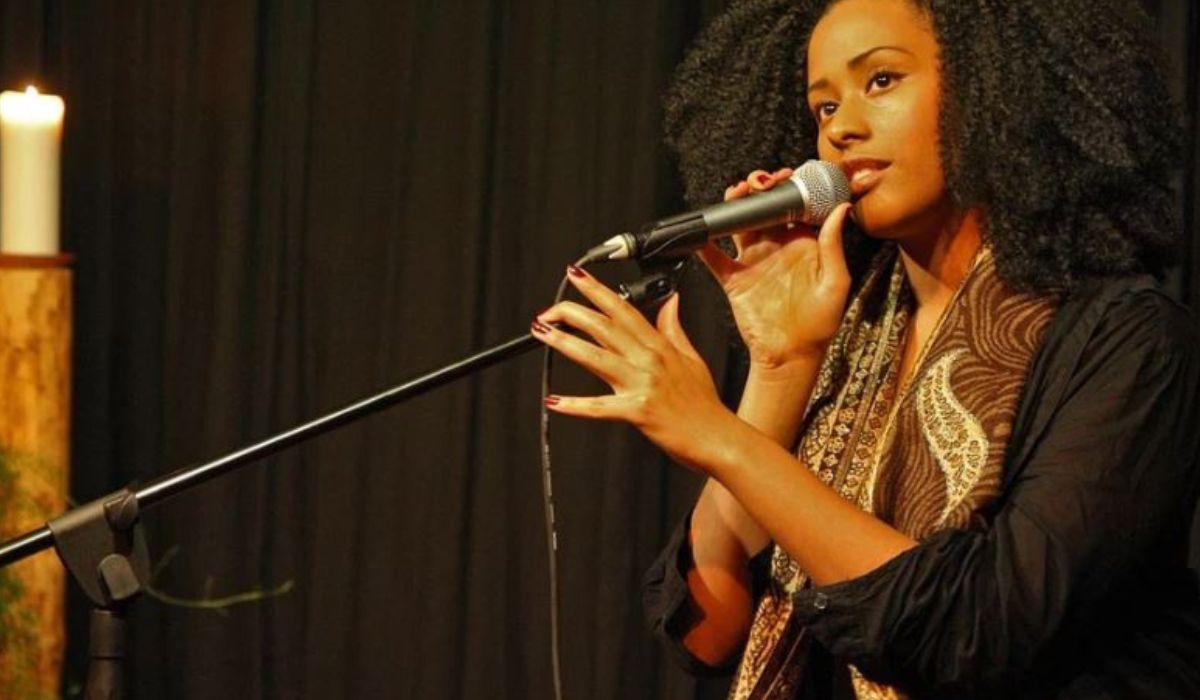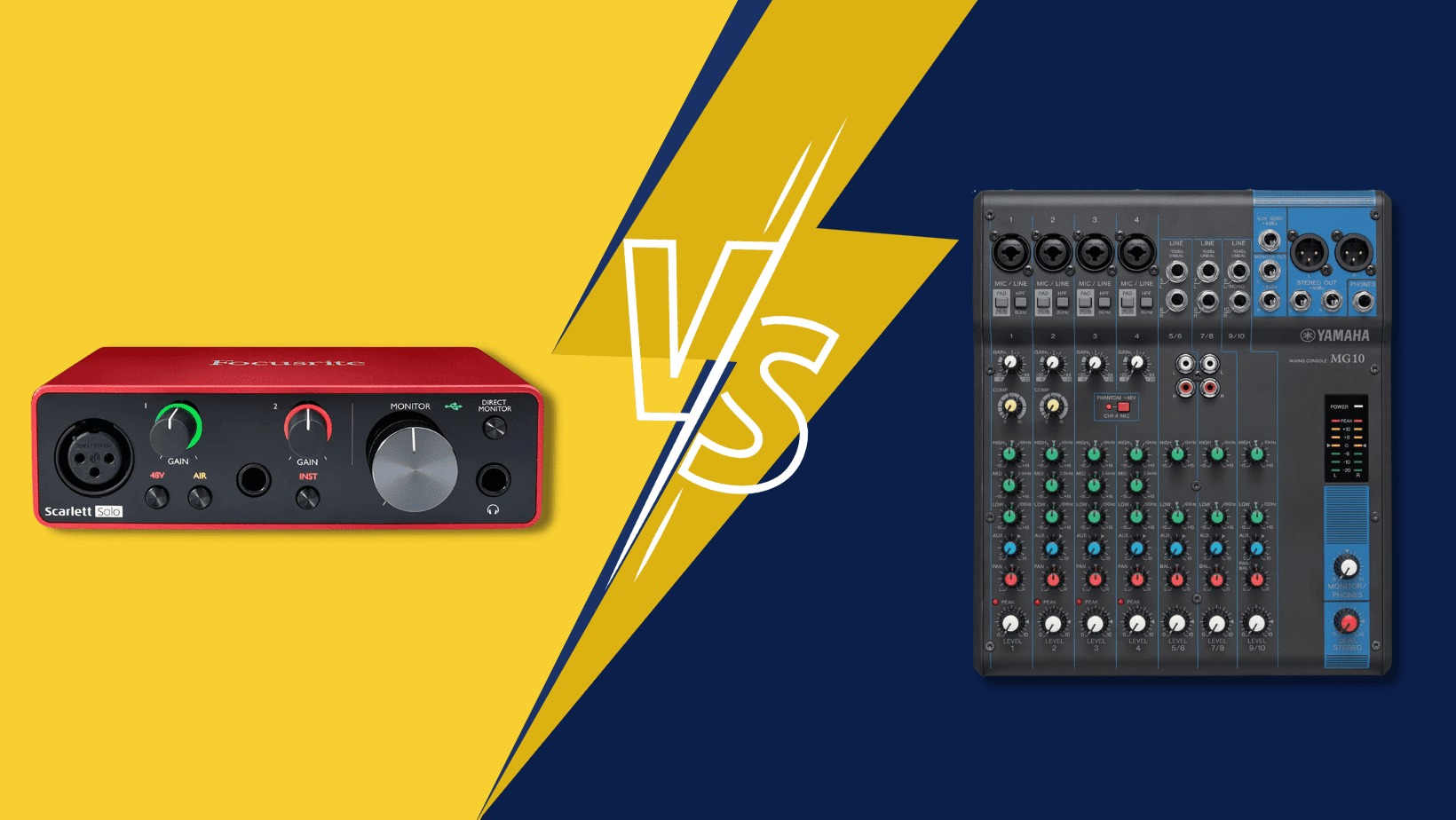Home>Events & Info>Opera>What Is The Difference Between An Opera And An Operetta
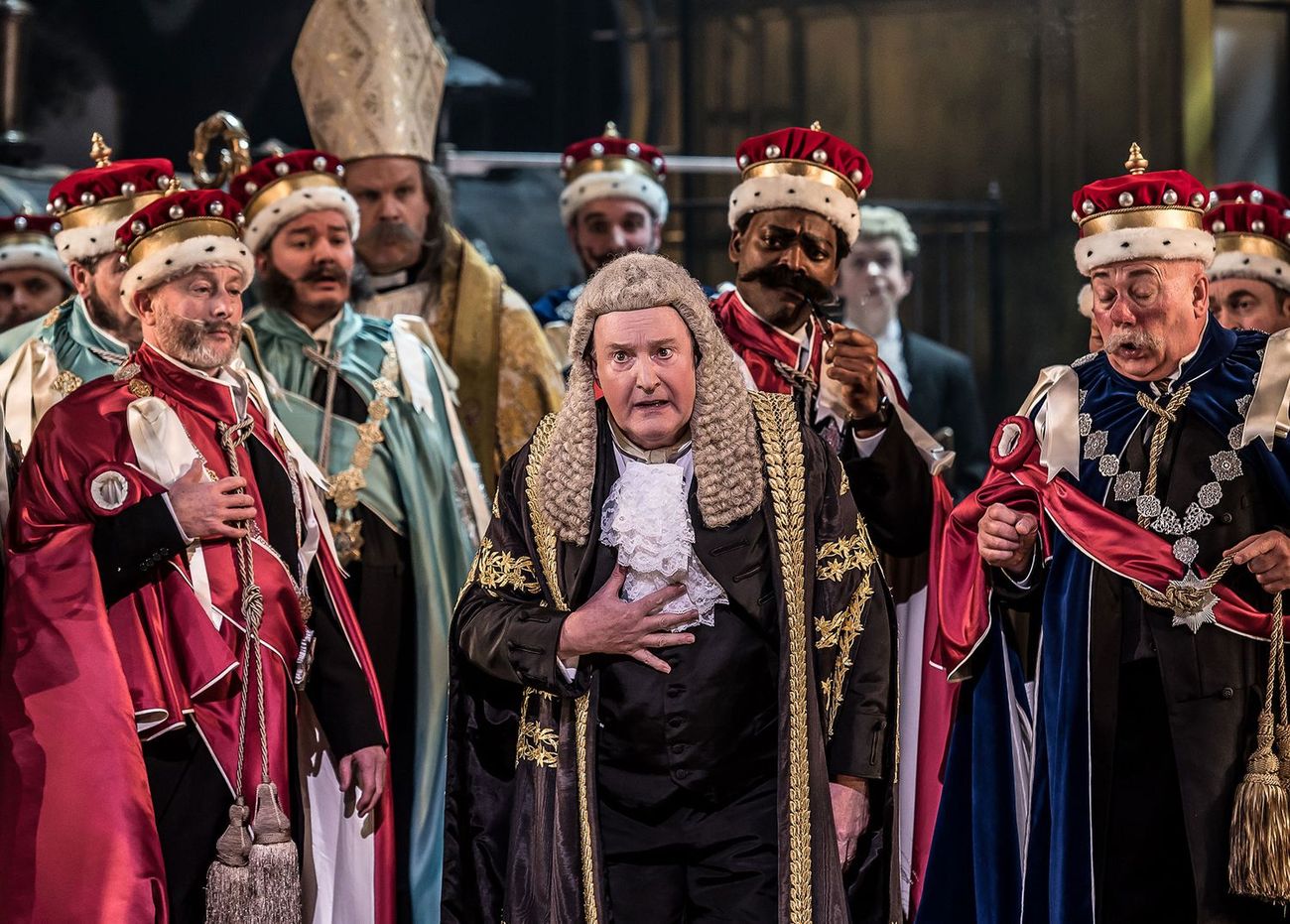

Opera
What Is The Difference Between An Opera And An Operetta
Modified: January 22, 2024
Discover the key distinctions between an opera and an operetta in terms of their music, storyline, and theatrical presentation. Embrace the world of opera today!
(Many of the links in this article redirect to a specific reviewed product. Your purchase of these products through affiliate links helps to generate commission for AudioLover.com, at no extra cost. Learn more)
Table of Contents
- Introduction
- Definition of Opera
- Definition of Operetta
- Historical Background
- Musical Style
- Storytelling
- Length and Structure
- Characterization and Vocal Techniques
- Orchestra and Musical Accompaniment
- Performance Venue and Production Scale
- Audience and Accessibility
- Famous Examples of Operas
- Famous Examples of Operettas
- Conclusion
Introduction
Opera and operetta are two distinct forms of art that have captivated audiences for centuries. While both share similarities in terms of musical composition and performance, they differ significantly in their storytelling, structure, and presentation. Understanding the differences between these two genres can help opera enthusiasts and newcomers alike appreciate the depth and diversity of the world of musical theater.
Opera, often considered one of the most complex and sophisticated art forms, has a long and rich history dating back to the late 16th century. It brings together a variety of artistic elements, including music, singing, acting, set design, and costumes, to create a complete theatrical experience. Opera typically features grandiose storylines, dramatic characterizations, and emotionally charged music.
On the other hand, operetta emerged as a lighter alternative to traditional opera in the 19th century. It incorporates elements of comedy, humor, and romance, making it more accessible and entertaining for a broader audience. Operetta often features spoken dialogue interspersed with musical numbers and has a less formal structure compared to opera.
While both opera and operetta are performed using vocal techniques and orchestral accompaniment, they differ significantly in terms of their musical styles, storytelling approaches, and performance venues. Opera is known for its grandeur, complexity, and dramatic intensity, while operetta focuses on lightheartedness, wit, and catchy melodies.
In the following sections, we will explore the key differences between opera and operetta, delving into their historical backgrounds, musical styles, storytelling techniques, vocal techniques, orchestra accompaniment, performance venues, and audience accessibility. By gaining a deeper understanding of these unique art forms, you will be able to appreciate the nuances and appreciate the beauty and diversity of both opera and operetta.
Definition of Opera
Opera is a form of musical theater that originated in Italy in the late 16th century and quickly spread throughout Europe. It is characterized by a combination of music, singing, acting, set design, and costumes to convey a complete dramatic narrative. The word “opera” is derived from the Italian word for work or labor, indicating the collaborative effort required to produce this art form.
Opera is known for its grandeur, complexity, and emotional intensity. It often explores profound and timeless themes, such as love, betrayal, power, and tragedy. The music in opera is composed specifically for the genre, featuring arias (solo songs), duets, ensembles, choruses, and orchestral interludes. A wide range of vocal techniques is utilized, including bel canto, dramatic singing, and virtuosic displays of vocal prowess.
One of the defining features of opera is its use of the human voice as the primary means of storytelling. Singers, also known as vocalists or opera singers, undergo extensive training to develop their vocal skills and versatility. They are trained to project their voices over an orchestra and convey a range of emotions through their singing.
In terms of structure, opera typically consists of multiple acts divided into scenes. The text is usually sung in a language that suits the origin of the opera, such as Italian, German, English, or French. However, with the evolution of opera, translations and adaptations have allowed for performances in various languages.
Opera performances take place in dedicated opera houses, which are designed to provide optimal acoustics and visibility. These venues often feature ornate architecture and lavish interiors, further enhancing the overall theatrical experience.
Some of the most well-known and celebrated operas include Giuseppe Verdi’s “La Traviata,” Wolfgang Amadeus Mozart’s “The Marriage of Figaro,” and Richard Wagner’s “Der Ring des Nibelungen.” These timeless works continue to be performed and appreciated by opera enthusiasts around the world.
Despite its rich history and traditional roots, opera has evolved to include modern and experimental works, showcasing the versatility and adaptability of the art form. From classic operas to contemporary compositions, opera continues to captivate audiences with its power, beauty, and emotional impact.
Definition of Operetta
Operetta is a lighter form of musical theater that emerged in the 19th century as a more accessible alternative to traditional opera. It combines elements of comedy, romance, and catchy melodies to create an entertaining and engaging theatrical experience. Unlike opera, which often focuses on grandiose and emotionally charged narratives, operetta emphasizes lightheartedness, humor, and wit.
The term “operetta” is derived from the Italian word “operetta,” meaning “little opera.” While it shares similarities with opera in terms of musical composition and performance, operetta differs in terms of its storytelling approach, structure, and presentation.
Operetta features a combination of spoken dialogue and musical numbers. The dialogue helps advance the plot and provides comedic or dramatic relief between the musical sequences. The music in operetta usually consists of catchy melodies, uplifting choruses, and lively dance numbers. Famous composers of operetta include Johann Strauss II, Franz Lehár, and Gilbert and Sullivan.
In terms of structure, operetta typically follows a more flexible and less formal structure compared to opera. It may consist of two or three acts, with each act containing a series of scenes. The storyline in operetta often revolves around romantic entanglements, mistaken identities, and humorous situations.
Operetta performances take place in various settings, including theaters, music halls, and even outdoor venues. Compared to opera houses, operetta venues may have a more relaxed atmosphere and allow for audience participation, such as clapping along with the music or cheering for comedic moments.
Operetta is known for its catchy tunes and memorable songs, which often become popular outside the theater. Some well-known operettas include “Die Fledermaus” by Johann Strauss II, “The Merry Widow” by Franz Lehár, and “The Pirates of Penzance” by Gilbert and Sullivan.
Operetta provides a bridge between opera and musical theater, with its lighter tone and accessibility appealing to a broader audience. It offers a delightful and entertaining experience, combining music, humor, and storytelling in a way that engages and captivates spectators.
While operetta may not possess the same level of complexity and emotional depth as opera, it holds its own unique charm and continues to be celebrated for its ability to transport audiences into a world of laughter, romance, and delightful melodies.
Historical Background
The historical background of opera and operetta plays a significant role in understanding the development and evolution of these two genres. Let’s explore the historical origins of both art forms.
Opera emerged during the late Renaissance period in Italy, specifically in the city of Florence, around the late 16th century. It was largely influenced by the Florentine Camerata, a group of intellectuals, musicians, and poets who aimed to recreate the drama of ancient Greek theater. Their experiments with musical and dramatic expression paved the way for the birth of opera as we know it today.
The first recorded opera, “Dafne,” composed by Jacopo Peri, premiered in Florence in 1598. This marked the beginning of an era that saw opera rapidly gaining popularity across Europe. The rise of opera was fueled by the support of aristocratic patrons, who sponsored lavish productions and commissioned composers to create new works.
By the 17th century, opera had spread beyond Italy and gained prominence in other European countries, including France, Germany, and England. Each region developed its own unique style and interpretation of opera, contributing to the diversity and richness of the genre.
Operetta, on the other hand, originated in France during the mid-19th century. It evolved from the vaudeville and burlesque traditions, which featured comedic sketches and songs. One of the earliest examples of operetta is “Orphée aux enfers” (Orpheus in the Underworld), composed by Jacques Offenbach in 1858. This work introduced the blend of spoken dialogue and musical numbers that became a characteristic feature of operetta.
Operetta quickly gained popularity in France and subsequently spread to other European countries, including Austria, Germany, and England. Famous composers like Franz Lehár in Austria, Johann Strauss II in Germany, and Gilbert and Sullivan in England made significant contributions to the genre, creating enduring works that are still performed today.
Throughout the centuries, both opera and operetta continued to evolve and adapt to the changing tastes and preferences of audiences. From the grand spectacles of the Baroque era to the innovative approaches of the Romantic period and the experimentation of the modern era, these art forms have continuously pushed the boundaries of musical theater.
Understanding the historical background of opera and operetta provides a context for appreciating their development, influences, and impact on the world of music and theater. From their humble beginnings to their enduring legacy, opera and operetta continue to enchant audiences with their timeless beauty and captivating performances.
Musical Style
The musical style of opera and operetta plays a crucial role in distinguishing these two genres. While they share similarities in terms of vocal techniques and orchestral accompaniment, they differ significantly in their musical composition and overall approach.
Opera is known for its grand and intricate musical style. Composers of opera utilize complex harmonies, rich orchestration, and emotionally charged melodies to enhance the dramatic narrative. The music in opera often reflects the intensity of the storyline and the emotions of the characters. It can range from soul-stirring solos to powerful duets and elaborate ensemble numbers.
In opera, the music takes center stage, with singers often performing in a virtuosic manner to showcase their vocal abilities. The vocal techniques employed in opera vary depending on the type of role and character being portrayed. From delicate and lyrical passages to powerful and dramatic displays, opera singers undergo rigorous training to master the wide range of vocal techniques demanded by the genre.
Operetta, on the other hand, focuses on lighter and more accessible musical styles. The music in operetta features catchy melodies, lively dance rhythms, and hummable tunes. Composers of operetta often incorporate waltzes, polkas, and other popular dance forms into their compositions, creating an enchanting and enjoyable musical experience.
Due to its lighter nature, operetta offers more room for spoken dialogue, allowing for a seamless transition between dialogue and musical numbers. The music in operetta serves as an accompaniment to the comedic or dramatic moments, enhancing the storytelling and adding an element of entertainment.
While opera generally adheres to formal structures and forms, operetta allows for more creative freedom. Operetta composers often experiment with various musical styles and genres, incorporating elements of popular music, folk tunes, and even classical compositions. This versatility adds to the overall light and enjoyable nature of operetta.
Despite their differences in musical style, both opera and operetta require skillful orchestration to bring the compositions to life. Orchestras in opera are typically larger and more expansive, featuring a wide range of instruments to create powerful and passionate soundscapes. In contrast, operetta orchestras are often smaller, consisting of a chamber-sized ensemble, which suits the lighter and more intimate nature of the genre.
Understanding the distinct musical styles of opera and operetta allows us to appreciate the varying moods, emotions, and artistic expressions within each genre. From the grandeur and complexity of opera to the catchy melodies and enjoyable tunes of operetta, both art forms demonstrate the breadth and diversity of musical theater.
Storytelling
The storytelling in opera and operetta greatly differs in terms of themes, narrative structure, and overall tone. While opera often explores profound and dramatic stories, operetta tends to focus on lighter, comedic, and romantic narratives.
In opera, the stories are often epic in scope, dealing with themes of love, tragedy, power, and betrayal. The narrative arcs in opera are generally more complex and emotionally charged, featuring intricate character development and dramatic plot twists. The stories can be based on historical events, literary works, or original creations. Opera librettos (the text of the opera) are carefully crafted to convey the depth and complexity of the narrative.
The storytelling in opera is primarily conveyed through music and singing, with composers using various musical techniques to evoke emotions, depict character relationships, and drive the plot forward. Aria, recitatives, and ensembles are carefully integrated into the narrative, providing insight into the characters’ thoughts, desires, and conflicts.
Operetta, on the other hand, leans towards more light-hearted and humorous storytelling. The narratives often revolve around romantic entanglements, mistaken identities, and comedic situations. Operetta embraces comedy, satire, and witty dialogue to entertain audiences.
Unlike opera, operettas incorporate spoken dialogue in addition to musical numbers. The dialogue serves as a means to advance the plot, provide comedic relief, and establish the relationships between the characters. The spoken dialogue is interspersed with memorable and catchy musical numbers, adding to the charming and playful nature of operetta.
Operetta often features tongue-in-cheek humor, satire, and social commentary. It has a more informal and accessible approach to storytelling, aiming to entertain and amuse the audience rather than delve into profound philosophical or emotional depths.
While the storytelling in opera may require a more focused and attentive approach from the audience, the storytelling in operetta allows for a lighter and more carefree experience. Both genres offer unique and engaging narrative styles that cater to different tastes and preferences, showcasing the breadth and versatility of musical theater as a storytelling medium.
Length and Structure
The length and structure of opera and operetta vary significantly, reflecting the differences in their storytelling approaches and artistic goals.
Opera tends to be more extensive in length and complex in structure. It often consists of multiple acts, each containing a series of scenes. The duration of an opera can range from a couple of hours to several hours, depending on the specific work. The acts and scenes are meticulously crafted to create a cohesive narrative arc, allowing the story to develop and unfold gradually.
Opera follows a formal structure, typically divided into distinct sections, including overtures, arias, recitatives, and ensembles. These sections serve specific dramatic and musical purposes, advancing the storyline and providing opportunities for emotional expression. The structure of opera ensures a balance between the music and the narrative, allowing both to harmoniously contribute to the overall artistic experience.
Operetta, on the other hand, generally has a lighter and more flexible structure. It often consists of two or three acts, each containing a series of scenes. Compared to opera, operetta has a more episodic nature, with the scenes loosely connected and allowing for a relatively self-contained story in each act. This structure allows for a more relaxed and accessible experience for the audience.
In operetta, the focus is often on creating a pleasant and enjoyable experience through catchy songs, lively dance numbers, and comedic moments. The music and dialogue work together to entertain and engage the audience, with less emphasis on a linear narrative progression. This structure allows for a more relaxed and light-hearted approach to storytelling.
Both opera and operetta adapt their length and structure to serve the specific artistic vision and intentions of the composer and librettist. While opera aims for a more epic and profound experience, operetta seeks to entertain and amuse the audience with its lighter and more accessible approach. Regardless of the length and structure, both genres offer unique experiences and showcase the versatility of musical theater as an art form.
Characterization and Vocal Techniques
Characterization and vocal techniques play a crucial role in distinguishing opera and operetta, showcasing the diverse range of characters and the vocal skills required to bring them to life.
In opera, the characters are often complex and multi-dimensional, with the storyline delving deep into their emotions, conflicts, and relationships. The vocal techniques used in opera can vary depending on the character’s role and personality. Opera singers undergo extensive training to master the art of operatic singing, which requires a high level of vocal control, range, and stamina.
The vocal techniques employed in opera often include bel canto, a style characterized by seamless legato phrasing, agility in ornamentation, and expressive vocal embellishments. Other vocal techniques used in opera include dramatic singing, which emphasizes powerful and passionate delivery, and coloratura, which showcases breathtaking high-speed vocal runs and trills.
Operatic characters are usually categorized into different voice types, such as soprano, mezzo-soprano, tenor, baritone, and bass, each with its own vocal range and characteristics. These voice types contribute to the diverse and rich sound palette of opera, allowing for a wide range of expressive possibilities.
In operetta, the characterization has a lighter and more humorous tone. The characters are often portrayed in a more exaggerated and comedic fashion, enhancing the entertainment value of the genre. The vocal techniques required in operetta are less demanding compared to opera, focusing more on delivering the comedic and light-hearted aspects of the music.
Operetta vocalists employ a more conversational and natural singing style, with an emphasis on clarity of diction and interpretation. The singing in operetta is often more straightforward, allowing for witty and memorable delivery of the lyrics and melodies. While vocal skill is still important in operetta, it places less emphasis on virtuosic displays and more on charm and comedic timing.
Both opera and operetta require skilled performers who can effectively convey the emotional nuances and character traits through their singing. While opera demands a higher level of technical proficiency and vocal control, operetta emphasizes the ability to deliver catchy melodies, comedic timing, and light-hearted charm.
Understanding the unique vocal techniques and characterization in opera and operetta helps to appreciate the skills and range of the performers. It also adds depth and dimension to the portrayal of the characters, allowing the audience to become fully immersed in the world of the story being told.
Orchestra and Musical Accompaniment
The orchestra and musical accompaniment play a significant role in enhancing the overall experience of both opera and operetta, contributing to the richness and depth of the music.
In opera, the orchestra typically consists of a wide range of instruments, including strings, woodwinds, brass, and percussion. The size of the orchestra can vary depending on the specific opera and the requirements of the score. Operatic compositions often feature intricate and complex orchestrations, with the music carefully crafted to complement and enhance the dramatic narrative.
The orchestra in opera works in tandem with the vocalists, providing a lush and dynamic backdrop for their singing. It serves to heighten the emotional impact of the music and create powerful climaxes during intense moments of the story. The opera score may incorporate various musical forms and styles, ranging from delicate and lyrical passages to grand and majestic crescendos.
Operetta, on the other hand, tends to have a smaller orchestra compared to opera. The orchestration in operetta typically consists of a chamber-sized ensemble, featuring string sections, woodwinds, and occasional brass and percussion instruments. The smaller ensemble size allows for a more intimate and delicate sound, reflecting the lighter and more accessible nature of operetta.
The orchestration in operetta emphasizes the melodic and rhythmic elements of the music, providing a buoyant and lively accompaniment to the vocalists. The music in operetta often features catchy melodies and dance-like rhythms, creating an atmosphere of joy and charm. The operetta score may incorporate popular dance forms and genres, such as waltzes, polkas, and marches, further enhancing the overall musical experience.
Both opera and operetta rely on skilled conductors to lead the orchestra and synchronize the music with the vocal performances. Conductors play a crucial role in interpreting the score, shaping the dynamics, and maintaining the cohesive musicality of the performance.
Understanding the role of the orchestra and musical accompaniment in opera and operetta enriches the appreciation of the intricate interplay between the vocalists and instrumentalists. The orchestra enhances the emotional impact, provides depth and color to the music, and elevates the overall artistic experience, creating a harmonious and immersive world of sound.
Performance Venue and Production Scale
The performance venue and production scale of opera and operetta contribute to the overall theatrical experience and reflect the grandeur and complexity of each genre.
Opera performances are typically held in dedicated opera houses or large theaters specifically designed to accommodate the unique requirements of opera productions. These venues are characterized by their architectural beauty, ornate interiors, and excellent acoustics. Opera houses often have multiple levels of seating, allowing for a large audience capacity, and feature stage designs that can accommodate elaborate set pieces, props, and intricate stage machinery.
Opera productions are known for their grand scale, featuring lavish costumes, detailed set designs, and elaborate stage effects. The production scale of opera often involves large casts, intricate choreography, and extensive rehearsals to bring the vision of the composer and director to life. The performances require significant resources and planning, making opera productions a monumental undertaking.
Operetta, on the other hand, can be performed in a variety of venues, including theaters, music halls, and even outdoor spaces. The production scale of operetta tends to be more flexible and adaptable, allowing for performances in more intimate and diverse settings. While some operetta productions may still feature elaborate set designs and costumes, they generally prioritize creating a cozy and inviting atmosphere for the audience.
Operetta productions often have smaller casts compared to opera, focusing on showcasing the chemistry and comedic timing between the characters. The staging and choreography in operetta are often more lighthearted and whimsical, reflecting the playful and entertaining nature of the genre.
Both opera and operetta performances require skilled directors, choreographers, and production teams to effectively coordinate the various elements of the production. From set designers to lighting technicians and costume designers, the collaborative efforts of these professionals come together to create visually stunning and immersive experiences on stage.
The performance venue and production scale of opera and operetta contribute to the overall spectacle and atmosphere of each genre. Whether it is the grandeur of an opera house or the intimate setting of a theater, these venues become the backdrop for the artists’ creativity and the audience’s engagement.
Audience and Accessibility
The audience and accessibility of opera and operetta are influenced by various factors, including historical context, cultural perception, and artistic intentions. Understanding the audience dynamics and accessibility of these genres provides insight into their reach and impact.
Opera has traditionally been associated with high culture and has often attracted a more select and affluent audience. Historically, opera performances were attended by the noble and aristocratic classes, who had the means and social status to support and participate in the arts. The grandeur and complexity of opera productions, combined with the formal atmosphere of opera houses, contributed to the perception of opera as a sophisticated and exclusive art form.
However, in recent years, efforts have been made to make opera more accessible to a wider audience. Many opera houses now offer discounted ticket prices, student programs, and community outreach initiatives to encourage broader participation. Subtitles and translations are often provided, enabling non-native speakers to better understand and appreciate the performances.
Operetta, on the other hand, has historically been more accessible and appealing to a broader audience. Its lighter and more entertaining nature often invites a more diverse crowd, including those who may be new to the world of opera and musical theater. Operetta has the ability to attract audiences looking for a fun and enjoyable experience that combines music, comedy, and romance.
Operetta’s lighter tone and catchy melodies have made it popular among casual theater-goers and music enthusiasts alike. Its accessibility extends to the simplicity of storytelling, spoken dialogue, and relatable characters, which allows for a wider appreciation without the need for specialized knowledge or background in the arts.
Technology has also helped increase accessibility to both opera and operetta. Live performances are often filmed and streamed online or broadcasted in cinemas, allowing people from around the world to experience the magic of these genres. Additionally, recordings of past performances and soundtracks are readily available, providing further accessibility to those who may not have the opportunity to attend live shows.
Efforts to make opera and operetta more inclusive and accessible continue to evolve. Educational programs, community engagements, and initiatives promoting diversity and representation in casting and storytelling are helping to break down barriers and invite a wider audience to engage with these art forms.
Both opera and operetta have unique qualities that can captivate and engage audiences in their own ways. The audience and accessibility of these genres are shaped by various factors, but the ongoing efforts to make them more accessible ensure that the beauty and power of music and theater can be enjoyed by a wider and more diverse audience.
Famous Examples of Operas
Opera has produced countless iconic and enduring works throughout its rich history. Here are some famous examples of operas that have left a lasting impact on audiences around the world:
- Giuseppe Verdi’s “La Traviata”: Based on Alexandre Dumas fils’ novel “La Dame aux Camélias,” this tragic love story has become one of the most beloved and frequently performed operas. Known for its beautiful arias, such as “Sempre libera” and the heart-wrenching “Addio del passato,” “La Traviata” captures the emotional journey of a courtesan faced with societal expectations and the pursuit of true love.
- Wolfgang Amadeus Mozart’s “The Marriage of Figaro”: This witty and charming opera stands as one of Mozart’s most beloved masterpieces. Set in the Rococo era, it tells the story of Figaro’s attempts to marry Susanna while navigating the scheming Count’s advances. Filled with unforgettable music, including the famous overture and the captivating “Non più andrai,” “The Marriage of Figaro” showcases Mozart’s genius for blending comedy and drama.
- Richard Wagner’s “Der Ring des Nibelungen”: Comprising four interconnected operas (“Das Rheingold,” “Die Walküre,” “Siegfried,” and “Götterdämmerung”), this epic cycle explores themes of power, love, and the destructive nature of greed. Wagner’s innovative use of leitmotifs and his grand vision of a total artwork make “The Ring” one of the most ambitious and influential operatic works of all time.
- Giacomo Puccini’s “Madama Butterfly”: A tale of love, sacrifice, and cultural clash, this emotionally charged opera tells the story of Cio-Cio San, a young Geisha known as Butterfly, who falls in love with Pinkerton, an American naval officer. Puccini’s masterful melodies, including the heartbreaking “Un bel dì vedremo,” powerfully convey the tragic journey of love and betrayal.
- Georges Bizet’s “Carmen”: Set in vibrant Seville, “Carmen” presents a tale of passion, love, and jealousy. The opera follows the captivating gypsy Carmen and her fatal attraction to the soldier Don José. Bizet’s music, infused with Spanish flair, showcases unforgettable arias like “Habanera” and “Toreador Song.” “Carmen” remains one of the most popular and widely performed operas in the repertoire.
These operas represent just a fraction of the richness and diversity within the world of opera. Each work carries its own unique story, characters, and musical expressions, captivating audiences with their timeless beauty and emotional power.
Famous Examples of Operettas
Operetta has produced a plethora of delightful and memorable works that are beloved by audiences worldwide. Here are some famous examples of operettas that have stood the test of time:
- Jacques Offenbach’s “Orphée aux enfers” (Orpheus in the Underworld): This operetta, first performed in 1858, satirically reimagines the classical myth of Orpheus and Eurydice. Known for its lively and entertaining music, including the famous “Can-can,” “Orphée aux enfers” showcases Offenbach’s wit and humor, making it a perennial favorite.
- Johann Strauss II’s “Die Fledermaus”: This Viennese operetta, composed in 1874, has become synonymous with New Year’s celebrations in many parts of the world. Set during a masquerade ball, “Die Fledermaus” is filled with infectious melodies, witty dialogue, and celebratory dance music. Strauss’ mastery of the waltz, evident in the famous “Fledermaus Waltz,” makes this operetta a delightful and joyous experience.
- Franz Lehár’s “The Merry Widow”: Premiered in 1905, “The Merry Widow” became one of the most successful and enduring operettas of all time. Set in Paris, it tells the story of Hanna Glawari, a wealthy widow, and her romantic entanglements. Lehár’s melodic and romantic compositions, such as the iconic “Vilja Song” and the sweeping “Merry Widow Waltz,” have made this operetta a timeless classic.
- Gilbert and Sullivan’s “The Pirates of Penzance”: This comedic operetta, first performed in 1879, showcases the unique partnership between librettist W.S. Gilbert and composer Arthur Sullivan. “The Pirates of Penzance” tells the story of Frederic, a young pirate apprentice, and his quest for love and redemption. The operetta combines clever wordplay, memorable melodies, and infectious humor, with songs like “I Am the Very Model of a Modern Major-General” becoming iconic within musical theater.
- Emmerich Kálmán’s “Die Csárdásfürstin” (The Gypsy Princess): This operetta, composed in 1915, introduces audiences to the extravagant world of Hungarian aristocracy and Romani culture. “Die Csárdásfürstin” is known for its captivating melodies, such as the enchanting “Gypsy Princess Csárdás,” and its exploration of themes of love, loyalty, and identity.
These operettas represent the charm, humor, and beautiful melodies that have made this genre so beloved. Each work presents a unique blend of comedy, romance, and catchy tunes, creating an enchanting theatrical experience that continues to captivate audiences of all ages.
Conclusion
Opera and operetta are two distinct genres of musical theater, each with its own unique characteristics, storytelling approaches, and musical styles. While opera often explores profound and emotional narratives with grand productions and intense vocal performances, operetta embraces lightheartedness and charm, engaging audiences with catchy melodies, witty dialogue, and comedic moments.
Both opera and operetta have left an indelible mark on the world of music and theater. From the grandeur of Giuseppe Verdi’s “La Traviata” to the playful melodies of Johann Strauss II’s “Die Fledermaus,” these genres have captivated audiences for centuries with their memorable characters, powerful storytelling, and breathtaking musical compositions.
As art forms, opera and operetta continue to evolve and adapt to the changing tastes and preferences of audiences. Efforts to make these genres more accessible and inclusive have led to new interpretations, modern presentations, and innovative productions that spark creativity and engage a wider audience.
Appreciating the nuances and differences between opera and operetta allows us to fully embrace the breadth and diversity of the musical theater world. From the grand stages of opera houses to the intimate settings of theaters, these genres offer enchanting experiences that transport us into worlds of passion, comedy, and romance.
Whether it is the emotional intensity and vocal prowess of opera or the infectious melodies and light-heartedness of operetta, there is something for everyone to enjoy in the vast repertoire of musical storytelling. Opera and operetta, both steeped in tradition and vibrant with innovation, continue to captivate audiences and remind us of the power and magic of live performance.



